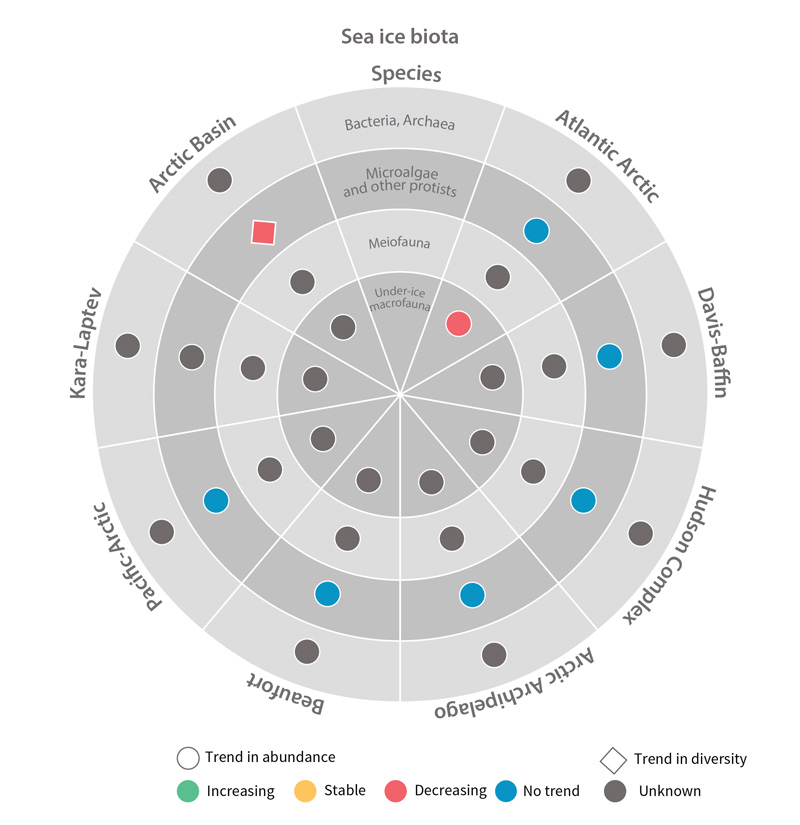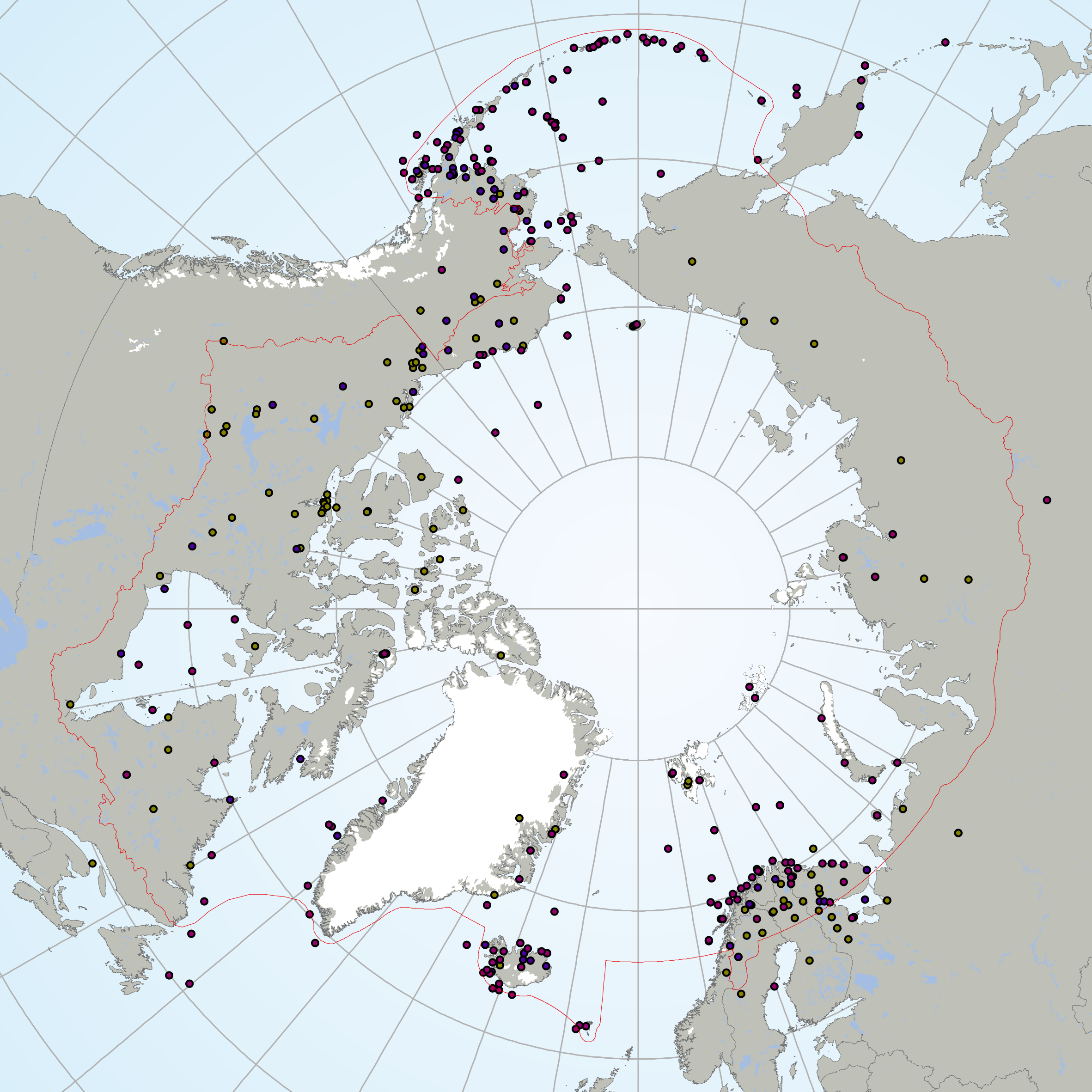trends
Type of resources
Available actions
Topics
Keywords
Contact for the resource
Provided by
Years
Service types
Scale
-

Trends in abundance or diversity of sea ice biota Focal Ecosystem Components across each Arctic Marine Area. STATE OF THE ARCTIC MARINE BIODIVERSITY REPORT - Chapter 4 - Page 177 - Figure 4.1
-
This series provides maps of trends in annual mean temperature and annual total precipitation for Canada over the period 1948-2012. Trends in Canada’s climate are analyzed to provide a comprehensive view of the climate variability and long-term changes over the period of instrumental record. Observed daily temperatures and precipitations were first homogenized/adjusted to account for changes in instrumentation, observing practices and relocation of observing sites. Annual mean anomalies from the 1961-1990 reference period were then obtained at individual sites and interpolated to 50-km spaced grid. Trends in annual mean temperature show significant warming from 1 to 3°C almost everywhere across Canada for 1948-2012. Trends in annual total precipitation indicate a significant increase in precipitation of 10 to 30% during 1948-2012 in the northern regions and in a few small areas in the south. For more information, please consult the article “Observed Trends in Canada’s Climate and Influence of Low-Frequency Variability Modes” published in the Journal of Climate (doi: http://dx.doi.org/10.1175/JCLI-D-14-00697.1). / Cette série fournit des cartes des tendances de la température moyenne annuelle et des précipitations totales annuelles pour le Canada au cours de la période 1948-2012. Les tendances du climat du Canada sont analysées pour fournir une vue d'ensemble de la variabilité climatique et des changements à long terme au cours de la période instrumentale. Les températures et les précipitations quotidiennes observées ont d'abord été homogénéisées/ajustées pour tenir compte des changements d'instrumentation, des pratiques d'observation et de la relocalisation des sites d'observation. Les anomalies moyennes annuelles de la période de référence 1961-1990 ont ensuite été obtenues sur des sites individuels et interpolées à une grille espacée de 50 km. Les tendances de la température moyenne annuelle montrent un réchauffement important de 1 à 3 ° C presque partout au Canada pour 1948-2012. Les tendances des précipitations totales annuelles indiquent une augmentation significative des précipitations de 10 à 30% en 1948-2012 dans les régions du nord et dans quelques petites régions du sud. Pour plus d'informations, veuillez consulter l'article intitulé «Tendances observées dans le climat et l'influence du Canada sur les modes de variabilité à faible fréquence» publié dans Journal of Climate (doi: http://dx.doi.org/10.1175/JCLI-D-14-00697.1).
-

The Circumpolar Biodiversity Monitoring Program, a cornerstone programme of the Conservation of Arctic Flora and Fauna (CAFF), Arctic Council working Group is an international network of scientists, government agencies, Indigenous organizations and conservation groups working together to harmonize and integrate efforts to monitor the Arctic's living resources.CBMP experts are developing four coordinated and integrated Arctic Biodiversity Monitoring Plans to help guide circumpolar monitoring efforts. Results will be channeled into effective conservation, mitigation and adaptation policies supporting the Arctic. These plans represent the Arctic's major ecosystems(Marine, Freshwater, Coastal, Terrestrial). It is important that monitoring programs develop the most effective reporting strategies if they are to inform decision making. To facilitate effective and consistent reporting, the CBMP has chosen a suite of indices and indicators that provide a comprehensive picture of the state of Arctic biodiversity – from species to habitats to ecosystem processes to ecological services. These indices and indicators are developed in a hierarchical manner, allowing users to drill down into the data from the higher-order indices to more detailed indicators. These are being developed through an expert consultation process. The Arctic Species Trend Index (ASTI) is part of this suite of indicators and indices developed by CAFFs CBMP. It tracks trends in over 300 Arctic vertebrate species and comprises the Arctic component of the Living Planet Index. It is important to identify how wildlife and ecosystems are changing in order to develop effective conservation and adaptation strategies in the Arctic, an environment undergoing dramatic changes. The ASTI describes overall trends across species, taxonomy, ecosystems, regions and other categories.
 Arctic SDI catalogue
Arctic SDI catalogue